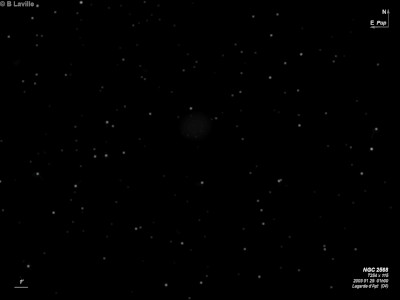
E.E. Barnard discovered NGC 2568 in 1881 with his 5-inch refractor in Nashville while sweeping for comets. In Sidereal Messenger, Vol 3, p60, he described a "very faint nebulosity of moderate extension; pretty even in light. A small star involved." In The Observatory, 8, p123, he wrote "Faint, close to, and south preceding a small star; the star is partly involved in the nebula." The latter observation was probably made with the 6-inch Cook refractor. So, with the 5- and 6-inch scope he didn't resolve the cluster. His discovery list in AN 2588 (1884) mentions Oliver Wendell, using the 15-inch refractor at Harvard College Observatory, described it as "rather diffuse and faint, but gradually a little brighter in the middle." I'm surprised the large refractor didn't provide some resolution. Paris Pismis reported the cluster as new (= Pismis 1) in her 1959 list of clusters found on Schmidt plates at the Tonantzintla Observatory.
Cederblad catalogued the cluster Ced 105, although there does not appear to be nebulosity involved. The Lynga open cluster catalogue and Sky Catalogue 2000.0 identify the cluster as Pismis 1 although Barnard's accurate position makes the NGC identification certain. ESO does label the cluster NGC 2568.
300/350mm - 13.1" (1/18/85): small, faint group of about 6 stars over haze, unimpressive.
Notes by Steve Gottlieb